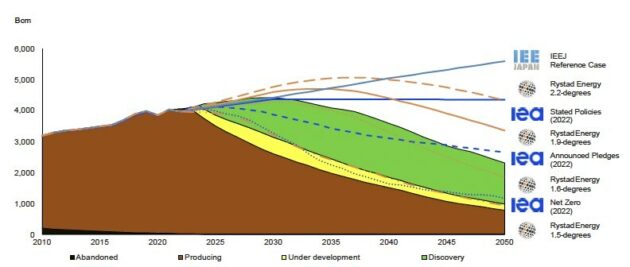
Snam and Rystad Energy release Global Gas Report
by CM staff

North America's gas demand grew by 4.8 per cent in 2022.

(CNW Group/Minoils Media Ltd)
LONDON — The International Gas Union (IGU), Snam and partner Rystad Energy, are releasing the 2023 Global Gas Report (GGR), at the Energy Intelligence Forum in London.
According to the report the global gas industry came out of the turbulent year more agile and adaptable, yet the global gas market is still in an unstable equilibrium in 2023 — the gas market remains undersupplied, highly sensitive to fluctuations on supply and demand sides.
Divergences across international energy and gas demand outlooks vis-à-vis low investments in natural gas, low carbon and renewable gases, fuels risk of worsened energy shocks toward 2030 and beyond.
Natural gas, low carbon and renewable gases play a pivotal role in decarbonising energy systems around the world, helped by the adaptability of LNG infrastructure that delivers critically needed flexibility.
A strengthened focus on comprehensive energy planning, low-carbon gases development, robust conservation measures to reduce demand, and CCS will determine the success of the energy transition.
As a consequence of the supply and price shocks coming on the heels of the Russia-Ukraine crisis, global gas demand decreased by 1.5 per cent in 2022 compared to 2021. The largest declines were recorded in Europe and Asia and were partially offset by strong growth in North America.
Europe’s gas demand decreased by almost 12 per cent in 2022. Spikes in international LNG prices caused the demand in Asia to fall by 18 Bcm (1.9 per cent) in 2022, with significant demand destruction seen in South Asia, where unaffordable LNG prices led to gas shortages and blackouts. Pakistan and Bangladesh were hard hit and saw a 12 per cent and 15 per cent gas drops, respectively in 2022.
North America’s gas demand grew by 4.8 per cent in 2022, as the North American prices remained largely isolated and affordable. In the first half of 2023, China saw gas demand grow at 5.4 per cent year-on-year to reach 194 Bcm.
“As part of a more and more interconnected global market, the European gas system managed to overcome the enormous challenges faced in 2022, also thanks to the flexibility provided by LNG and the further diversification of gas supplies, which brought storages almost at full capacity ahead of the winter season,” said Stefano Venier, CEO, Snam. “It is important to continue investing in gas infrastructure to secure reliable and affordable natural gas supply and accelerate the development of green, low-carbon gas and CCS, considering the key role that molecules will play in the energy mix of the near and longer future.”
Global gas production in 2022 stayed flat with a marginal 8.3 Bcm or less than 0.5 per cent uptick, keeping the global gas in short supply. The curtailment of Russia’s output in 2022 was offset by supply growth in North America, the Middle East, Europe and Asia, roughly balancing out the volume of available gas supply in the market to the pre-Russia-Ukraine war level. Africa experienced a small drop in gas production between 2021 and 2022.
Natural gas prices remain above pre-covid and pre-energy crisis levels in H2 2023, yet prices cooled from the record-breaking heights of 2022. Price reduction in 2023 largely came from dropping demand, mostly in Europe and Asia. In late August 2022 natural gas price had recorded a historical peak, as the Netherlands-based TTF closed at around 90 USD/MMBtu and Asian spot LNG prices surged past 60 USD/MMBtu. Subsequent demand contraction, marginal supply growth, and infrastructure debottlenecking helped the market ease into a fragile, unstable equilibrium.
“The energy crisis reminded the world that only when energy is affordable and secure can it become truly sustainable,” said Madam Li Yalan, President, IGU. “So many developing countries in Asia, Africa, and South America, will continue to need more gas to fuel the economy, to reduce air pollution and emissions. It is clear, to build sustainable and affordable energy systems for all, gas investments are urgently needed alongside more renewables.”
Total global energy CO2 emissions in 2022 reached another record with a 1.1 per cent yearly growth. High gas prices led to gas-to-coal switching and an all-time high in emissions from coal, reaching about 16.8 giga-tonnes of CO2e. 2022 and 2023 continued the decade-long trend with coal having a 40 per cent share of global power sector emissions, while the global economic engines and major energy consumers like China and India increased their coal usage and approved new coal plants to mitigate energy security risks. In the first half of 2023, lower gas prices, nuclear recovery, and power production from renewable energy sources have reduced coal consumption and emissions, especially in Europe.